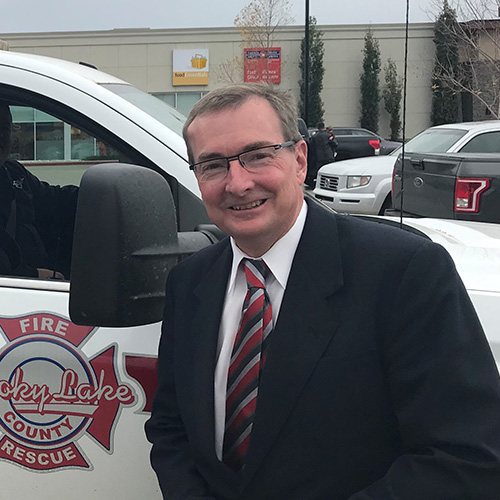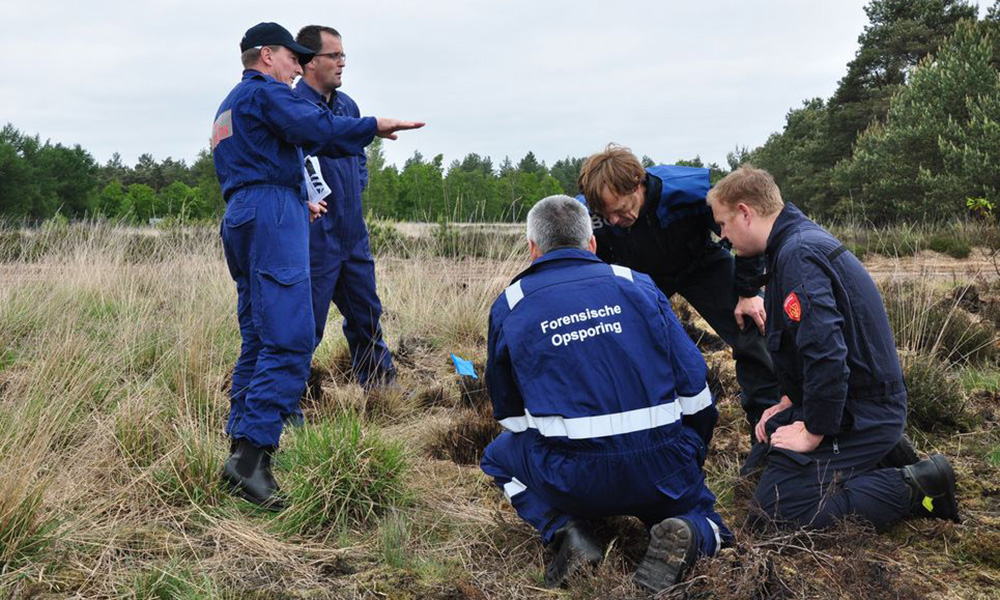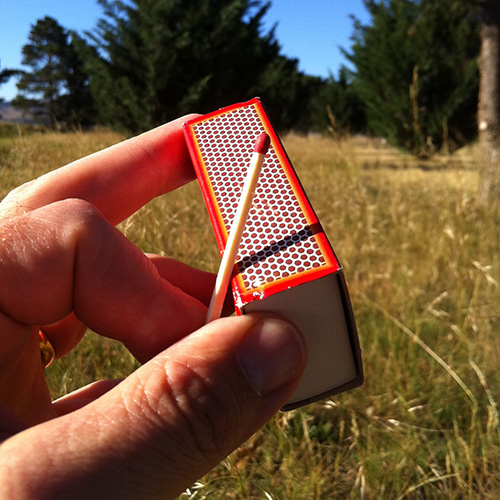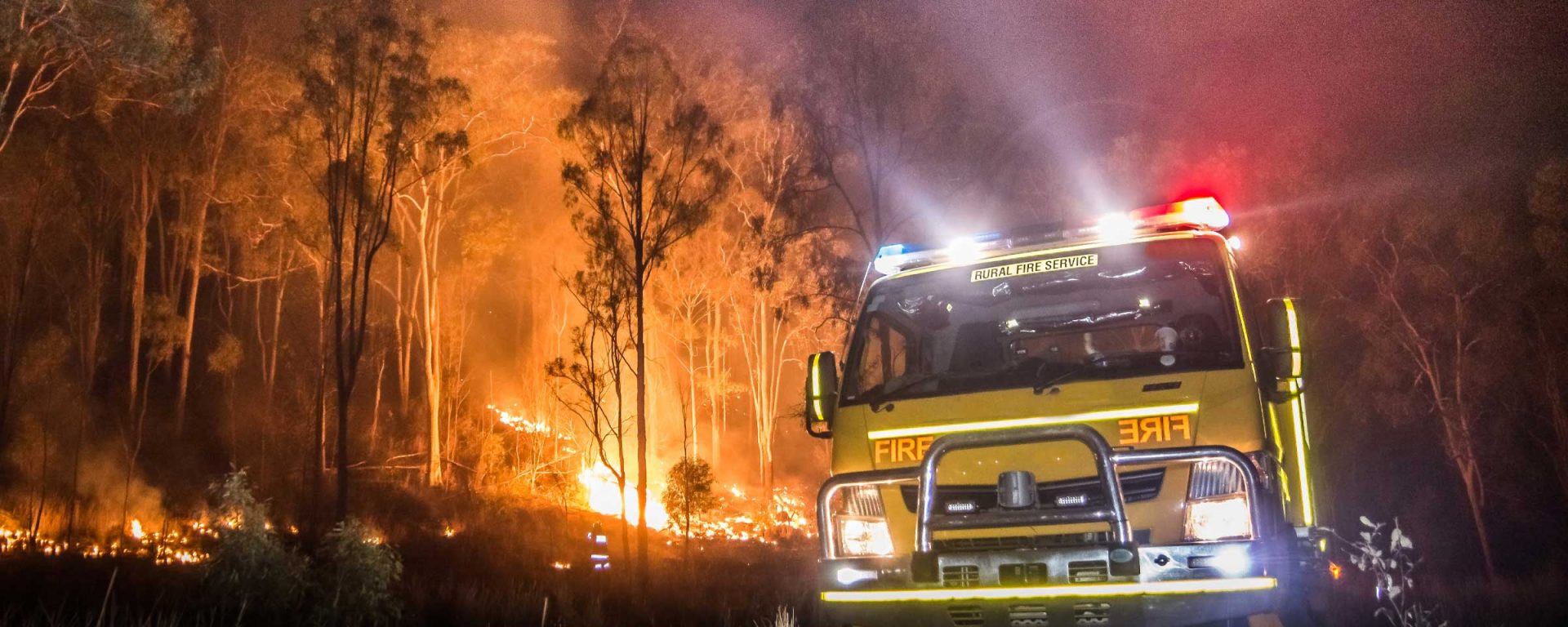Wildfires in Australia cost our communities dearly. Loss of lives, homes and livelihoods. Huge impacts on our ecosystems, economies and societies. The saying ‘prevention is better than cure’ has never been truer than in relation to wildfire.

We spoke with Charles Sturt University’s Richard Woods and asked him to take us behind the scenes as a wildfire investigator.
Richard is currently a wildfire investigation consultant. He provides advice to fire and police agencies around the world.
With more than five decades of volunteer and paid experience in NSW and ACT fire services, he was also a member of the NSW Police Force for a decade. And for the last 10 years he’s been teaching Charles Sturt University’s Graduate Certificate in Fire Investigation as Adjunct Associate Lecturer, Wildfire Investigation.
How do you become a wildfire investigator?
Not many of us know the role of wildfire investigator exists, let alone how to land such a job. Richard was one of the first in NSW.
“In 1994 the bushfire season in NSW was horrendous. Working in the then NSW Bushfire Service (now NSW Rural Fire Service), I was appointed as the controller of a number of major fires on the north coast. As a result of this terrible fire season, a coronial inquiry was established to review the cause and circumstances of fires across NSW. The State Coroner and Police called upon a Victorian to assist in the cause determination. NSW didn’t have any depth of experience in this specialist role.
“Following from that inquiry, limited wildfire investigation training was provided to the NSW Rural Fire Service. Attending this initial training course, I soon realised the service needed a greater capacity to investigate the causes of wildfire. And we needed a formal process of investigation within the service.
“That’s how I found myself in the role of establishing the fire investigation capability for the NSW Rural Fire Service. This then led to a permanent appointment to manage the newly created capability. Enhancing my wildfire investigation skills, I also engaged with experts in North America. I attended training in California and worked with international experts to bring the latest training materials to Australia. I used these skills to train fire and police investigators from around NSW.”
Can we predict wildfires in Australia?
Determining how a wildfire began can be challenging, but not impossible. Importantly, knowing what the causes are of wildfires allows agencies to put in place prevention measures.
“On so many levels, destruction from unplanned wildfires is one of the highest risk natural disasters that impact many parts of the world. As with any natural disaster, the repercussions are extensive. Wildfires cause social, economic and environmental damage, along with psychological issues for victims and responders that can last for many years.”
“Fire agencies spend significant parts of their budgets suppressing wildfires, but they also need to spend similar amounts on prevention. And that’s where investigation of cause is a great preventive tool.
“Like any problem, unless you know the cause, you can’t mitigate against it. If we can determine the causes of wildfires, their frequency and their ignition locations, we can address targeted prevention measures.
“As an example, consider a rural area where harvesting occurs at a certain time of year. Our analysis shows we have a frequency of fires ignited by harvesting equipment under certain conditions (humidity, temperature, wind, time of day). So we can implement measures to limit harvesting on certain days when the Fire Danger Rating is above a certain level. The actions of the land managers can be modified to prevent unplanned ignitions.”

What makes a great wildfire investigator?
To be a great wildfire investigator, Richard explains that you’ll have to have a mix of skills. Part firefighter, part police officer and a problem-solving attitude!
“To interpret a post-fire scene, you need to understand wildfire behaviour. When you view a blackened landscape of bush, you need to interpret the way in which fire has impacted on it. This allows you to identify the sequence of events that made the remnant vegetation appear the way it does.”
The basis of this interpretation requires a thorough understanding of the main elements that influence fire behaviour in a wildfire: fuel, weather and topography.
“But you need more than fire knowledge. You also need to have an appreciation of law enforcement processes as well. Wildfire investigation can be a real challenge. The examination of a fire scene may allow you to identify where a fire ignited, but the next step is to identify what the ignition source was.
“This is where fire science comes in, along with policing skills to identify and manage evidence and how to question witnesses. What were the circumstances leading up to this ignition? Were people or a vehicle nearby? Could it have been mechanical failure or was it deliberately lit? You need an inquisitive mind. And be able to say: I can confidently state the sequence of events that caused the fire to occur.”
But wait, there’s more…
You also need patience and an eye for detail.
“You can’t rush this type of process. It can be very laborious. In 2003, the Canberra wildfires resulted in four lives lost and 470 homes impacted. Lightning strikes in the Brindabella Ranges were thought to have been the cause. But my investigation team needed to verify this on the ground. It was a significant challenge that took a number of weeks in the rugged landscape.
“When you need to report the cause of a wildfire in legal proceedings, an investigator must have substantial evidence to validate their opinion. Finding the exact trees where lightning struck was critical to the inquiry into the cause of the Canberra fires. We couldn’t have done that in an afternoon. It requires persistence and patience to work through the charred landscape to identify evidence of the cause.
“Every fire is different. My experience is that every case has different circumstances that will assist in determining the cause of a wildfire.
“I have investigated many different cases; accidental, negligent or deliberate fires. Following an internationally recognised and accepted process ensures no evidence is overlooked. Witness statements, a thorough scene examination, recovery of evidence, and the weather conditions at the time, must all be considered.”
What is the biggest cause of wildfire?
Worldwide, there are a number of recognised wildfire causes.
- Smoking – not all cigarettes will cause a wildfire as there needs to be specific conditions align for a fire to result.
- Equipment use – mowers or slashers on agricultural properties when the grass is dry.
- Campfires – discarded or improperly distinguished campfires.
- Lightning strikes.
- Arson/incendiary – deliberately lighting fire with malicious intent.
- Children – inquisitive fire play involving no malicious intent.
- Miscellaneous causes – this includes railway incidents, car exhausts, powerlines, cutting or welding equipment, fireworks or firearms.
The leading causes of wildfires in Australia vary, depending on the proximity to urban areas. However, the most common causes include arson, powerlines and lightning strikes.
Is there a link between wildfires in Australia and climate change?
We asked Richard the question on everyone’s lips.
“In my experience, the 2019–20 fire season in Australia was an exceptionally busy and destructive one. This was primarily due to a reported sequence of lightning strikes in the middle of a severe drought. Hot and windy weather meant extreme and catastrophic fire danger.
“I’m not an expert in climatology, but during my fire service, I’ve seen a shift in wildfire conditions.
“We’ve always had a cycle of fires that have impacted communities around Australia. What’s different in recent times is the frequency of major wildfire events. Australia also has significant residential development in areas that weren’t previously developed. That increases the impact of wildfire and raises the risk of ignitions.”
You can make a difference
Are you ready to take the next step in your career? Building on your current skill set could be the edge you’re looking for. And you can play your part to help keep communities safe with a Graduate Certificate in Fire Investigation from Charles Sturt University. You can make a difference, so let’s get to work!







You must be logged in to post a comment.